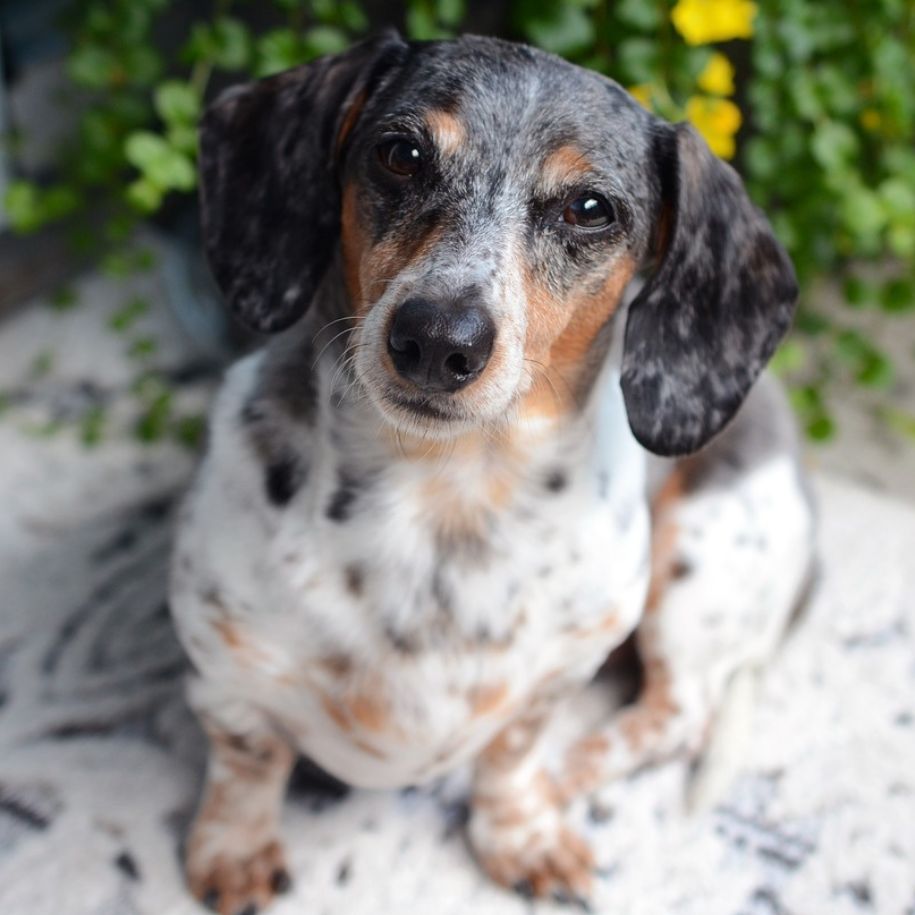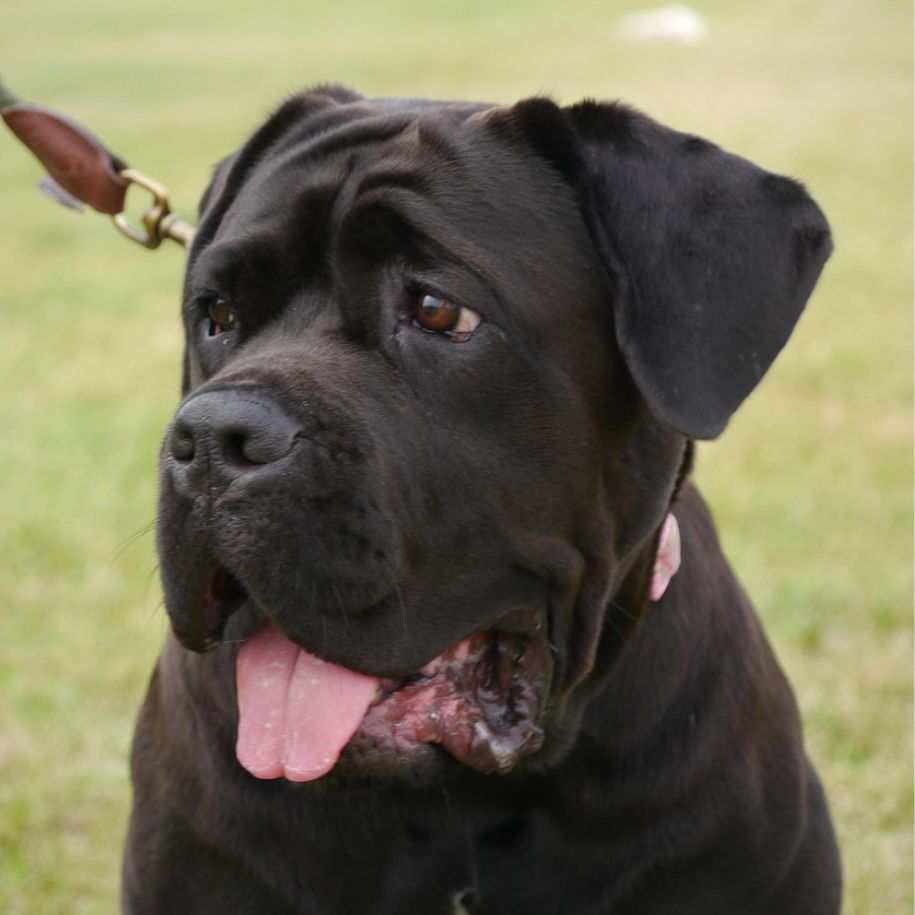The Great Dane is one of the tallest dog breeds on Earth, yet most owners call them gentle giants. In the UK, these giant breed dogs still turn heads when a Great Dane standing on its hind legs looks an adult in the eye. The dog breed was originally bred to hunt wild boar, but today many pet parents seeking a calm family pet choose this German breed for its sweet nature. This guide breaks down everything UK families need to know—from history to grooming.
History and Origin
The Great Dane’s story starts in 16th-century Europe. German nobles crossed swift coursing hounds with strong mastiffs to build a “German Mastiff” able to hunt wild boar in thick forests. Early Britons called the same breed a “Boar-Hound”; Victorian travellers later romanticised the name “Great Dane.”
By 1879 the first British breed club appeared, and UK Kennel Club records list Great Danes among their earliest working-group entries. Their size made them excellent guard dogs on country estates, yet their mellow nature let them live indoors with family. Over time the hunting role faded, but the Dane’s regal outline stayed. Today the dog breed standard still asks for power without bulk—a nod to those athletic ancestors who could chase boar yet remain quick on their feet. Modern reputable Great Dane breeders focus on even temperaments, hip joint soundness, and a heart muscle free from genetic disease, so the breed’s health keeps improving generation by generation.

Size and Looks
Dogs should stand at least 76 cm (30 in) at the shoulder, while bitches reach 71 cm. Many giant breed dog lovers know of Zeus, the famous Great Dane listed at over 1 m tall—the tallest dog recorded. Height alone, though, isn’t enough; the Kennel Club breed standard calls for a square, balanced outline and a deep chest.
Rapid growth makes weight gain tricky, so vets recommend large breed puppy food that releases energy slowly and protects developing bones. The PDSA notes Great Dane puppies need meals split into three or four portions a day until one year of age to avoid stress on the hip joint.
During growth spurts, watch for bowing front legs or limping—signs of potential health risks like panosteitis. Adult dogs still need high quality dog food, but portion control prevents obesity, a key factor in hip dysplasia and heart issues later in the dog’s age.
Coat Colours
The official colour palette includes:
-
Fawn (yellow‑gold with a black mask)
-
Brindle (fawn and black tiger‑stripe pattern)
-
Blue (solid steel‑grey)
-
Black (sleek and glossy)
-
Harlequin (white base with irregular black patches)
-
Mantle (black coat with white collar and feet)
All colours should fit the written breed standard and display the Dane’s trademark elegant, slightly arched neck and deep, powerful chest. The short, sleek coat sheds year‑round but is easy to keep clean with a weekly pass of a rubber grooming mitt.
Great Dane Grooming
Despite the giant frame, grooming a Dane is refreshingly easy:
-
Brush: Two or three short sessions a week with a rubber grooming mitt or soft bristle brush lift loose hair, improve skin oil distribution and reduce the amount of fur on the floor and furniture.
-
Bath: A monthly wash keeps that short coat smelling fresh. Use lukewarm water and a mild shampoo specially formulated for large breeds so you don’t strip essential oils.
-
Drool Patrol: Danes drool after drinking or when excited. Keep a cloth handy to wipe jowls and prevent the sticky mess from drying on walls.
-
Ear & Eye Care: Some imported dogs still sport cropped ears; check the ear canals weekly for wax or infection. Daily “eye‑booger” wipes help overall eye care.
-
Nails: Trim fortnightly. Heavy, fast‑growing nails can split and cause trouble when a muscular Dane tries to stop suddenly on slippery surfaces.
Pro Tip: End each session with praise and a tiny piece of high quality dog food. Positive association makes lifelong grooming stress‑free—even for anxious puppies.
Great Dane Temperament
Fans call Danes “gentle giants” for good reason. A well‑bred, well‑trained Dane is:
-
Affectionate & Loyal – They thrive on human contact and love to lean against their favourite people for a cuddle.
-
Moderately Playful – Short bursts of goofy zoomies followed by long naps.
-
Alert Guardians – Their size alone deters intruders, but most Danes prefer to protect by standing quietly between their family and a potential threat.
-
Friendly with Other Dogs & Pets – Early exposure teaches pups to respect other animals, including cats and rabbits.
-
Patient with Children – They usually tolerate sticky fingers, but toddlers must be supervised so nobody gets knocked over by a wagging tail.
Because they’re so large, consistent obedience training matters. Teach loose‑lead walking, polite greetings and calm behaviour around strangers and new things. Positive reinforcement builds trust and reduces anxious habits.
FunnyFuzzy's Orthopaedic Dog Bed
Common Health Problems Great Dane
-
Hip dysplasia – this giant breed dog puts huge force through its hip joint, so loose hips can appear even at a young age. Great Dane breeders X-ray parents before breeding, cutting the risk for Great Dane puppies.
-
Gastric dilatation (bloat) – Great Dane dogs top the Vet Compass danger list for this life-threatening twist of the stomach. Feed large breed puppy food or high quality dog food in two-to-three small meals, use a slow feeder, and keep energetic dogs calm for an hour after eating.
-
Dilated cardiomyopathy – the heart muscle stretches and weakens in many adult dogs. Yearly heart scans spot changes early; sudden tiredness or coughing means a vet visit at once.
-
Osteosarcoma (bone cancer) – long limbs that make Danes one of the tallest dog breeds also carry a higher bone-tumour risk.
-
Shorter life expectancy – Vet Compass life-table work shows a median Great Dane lifespan of about eight years, shorter than most dogs, so proactive checks matter.
Control weight gain, keep exercise low impact, and book twice yearly vet; early action improves the breed’s health.
Great Dane Care Guide
Food and Nutrition
A growing Dane can add 2 kg a week, so smart feeding is essential:
-
Use large‑breed puppy kibble until 18 months. These recipes are specially formulated with lower calcium‑phosphorus ratios to control growth and protect developing bones.
-
Adult males may eat 3,500–4,500 calories daily. Choose high quality dog food rich in poultry, fish or beef protein.
-
Add glucosamine, chondroitin and balanced vitamin & minerals to support joint health.
-
Always provide fresh water—bloat risk increases if a thirsty dog gulps after meals.
-
Break meals into two or three portions to reduce stomach stretch and chance of gastric dilatation.
Exercise and Space
Danes enjoy walks, short jogs and sniffing sessions: aim for 90–120 minutes split through the day. Avoid repetitive high jumps that stress those long hind legs. Apartment‑living works if there is a lift, but most owners prefer a garden where the dog can safely explore. Inside, give them an orthopaedic bed big enough for their full length without curling.
Training and Socialisation
Even a female Dane can outweigh an adult human when excited, so early training saves stress down the line. Enrol in puppy classes, teach calm greetings, and expose youngsters to other dogs, farm animals, traffic, car rides, and new things. Short, fun sessions suit their limited attention span and energy levels.
UK Laws
-
Compulsory microchipping: All dogs in England, Scotland and Wales must be microchipped and registered on an approved database by eight weeks old; ignore this and you risk a £500 fine.
-
Duty of care: Section 9 of the Animal Welfare Act 2006 says you must meet your dog’s needs for diet, environment, companionship and vet care—failure is a criminal offence.
-
Car travel: The Highway Code requires dogs to be “suitably restrained” in vehicles—use a crash-tested harness or crate large enough for a Great Dane standing without hitting the roof.
-
Insurance and public space rules: Many councils classify Danes as large breeds needing secure leads in parks; check local bylaws, especially if you plan to let your gentle giant off-lead near other pets.
Is the Great Dane Right for You?
• Space – Even well-behaved Danes need room to turn; tiny flats without lifts strain both dog and owner.
• Budget – High quality dog food, XXL vet fees and giant-breed insurance average £150-£200 per month for an individual dog.
• Time – Most dogs crave company, but Danes are clingy. If you work long shifts, arrange day care.
• Strength – Training Great Danes means controlling a full grown weightlifter on walks; consistent training must begin at a young age.
• Longevity trade-off – Great Dane lifespan is shorter than many other breeds, so families must accept goodbyes may come sooner.
When these boxes are ticked, you gain a loyal family pet that doubles as one of the world’s most excellent guard dogs without the attitude.
FAQs
Is a Great Dane a good family dog?
Yes—when early socialization and consistent training start in puppyhood, Great Dane dogs become affectionate family pets gentle with children and smaller pets.
Are Great Danes friendly or aggressive?
The Kennel Club breed standard calls for a friendly, courageous nature, not aggression. Poor socialisation, however, can make any dog breed wary.
What is the downside to owning a Great Dane?
Shorter life expectancy, high food costs, and the need for space. VetCompass lists giant breeds among those with higher rates of bloat and joint disease, which can mean costly surgery.
What is the maximum lifespan of a Great Dane?
While the average Great Dane lifespan sits around eight years, some individuals reach 10–11 with good genetics, fit weight and proactive health checks. RVC life-table data show overall dog averages of 11.2 years, but giant breeds trend lower.
Conclusion
Great Danes—often dubbed the tallest dog—blend a grand silhouette with a gentle soul. They were once hunting dogs able to hunt wild boar; today they lie across UK sofas, guarding the family with quiet confidence. By feeding large breed puppy food, sticking to positive reinforcement methods and following UK welfare laws, pet parents seeking a loyal yet laid-back companion can enjoy years with one of the world’s most iconic gentle giants.





